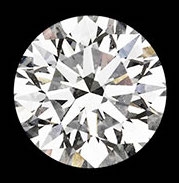Articles and News
GIA Laboratory Notes Increase In Lab-Grown Diamonds With Fraudulent Natural Report Numbers May 18, 2021 (0 comments)

Carlsbad, CA—GIA (Gemological Institute of America) is seeing an increase in the number of laboratory-grown diamonds submitted for update or verification services with counterfeit inscriptions referencing GIA natural diamond reports. The majority of the newly-submitted laboratory-grown diamonds have higher clarities, and their measurements and weights were almost identical to the GIA reports referenced by the counterfeit inscriptions.
“This unfortunate situation demonstrates why it is important, especially in any transaction where the buyer does not have a trusted relationship with the seller, to have the diamond grading report updated before completing a purchase,” said Tom Moses, GIA executive vice president and chief laboratory and research officer.
The most recent example, submitted in Antwerp, Belgium, is of a laboratory-grown diamond with a counterfeit inscription highlights how close the man-made stone's measurements are to the information on the original report. The report that accompanied the stone submitted for an update was for a 3.078 carat, 9.33 - 9.38 x 5.74 mm, Internally Flawless, G, natural diamond with triple excellent make. The newly-submitted stone was a 3.075 carat laboratory-grown diamond measuring 9.39 - 9.41 x 5.76 mm, VVS2, H, with a triple excellent make. At first glance, the natural and laboratory-grown diamonds described above are almost identical; the measurements were within just hundredths of millimeters of each other.
The stones are coming into GIA from different locations, with many coming to the GIA laboratory in Hong Kong, the Institute told The Centurion. This may be because of proximity to China, which is the source of many laboratory-grown diamonds; or because the trade there is wary and submits stones to GIA for verification or update services. Submissions are coming from a range of clients.
Consistent with GIA's mission to protect consumers and ensure their trust in gems and jewelry, when GIA encounters these cases, the Institute overwrites the counterfeit inscription, inscribes a newly issued report number and "Laboratory-Grown" on the girdle of the diamond.
In February 2021, GIA reported a similar incident of a number of treated natural diamonds submitted for update or verification services with counterfeit report number inscriptions.







